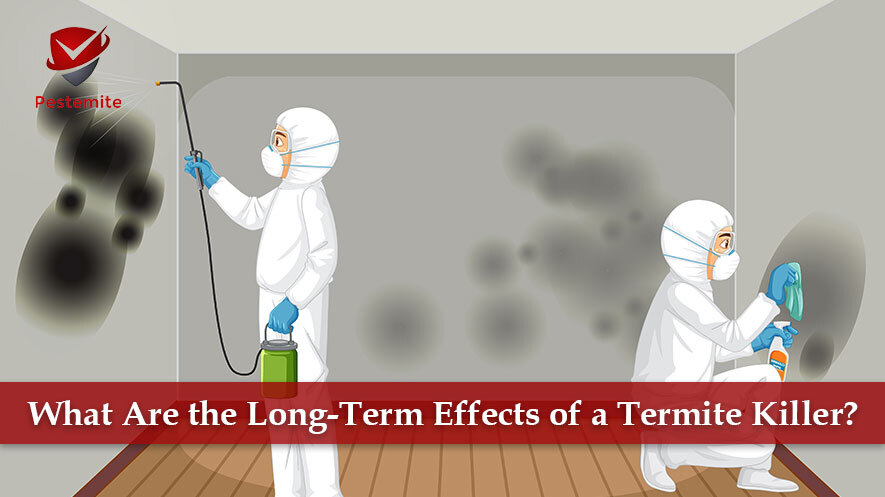Fipronil works when termites touch or ingest it, disrupting their nervous system and killing them. It is readily available at hardware stores and can be applied with a hose-end sprayer, backpack sprayer, or sprinkling can.
This treatment creates a chemical barrier around your home. This is an odorless and invisible option, and it doesn’t require baiting stations or tenting.
1. Termite Re-Infestation
Termite Killer is one of the most important steps homeowners can take to ensure their homes are safeguarded against these wood-eating pests. While there are some DIY products available that can help, professional treatments are able to provide superior protection because they involve injections into the ground around your home or a chemical barrier. Unfortunately, even with the best treatments, re-infestation can occur due to varying soil and weather conditions that cause breaches in the termite treatment and allow the insects inside your home.
Re-infestation can also happen when swarmers (winged termites) are able to find moist, untreated areas in which to establish new colonies. These swarmers can be easily mistaken for ant swarmers and can appear in places where there are cracks in concrete foundations or where pipes enter and exit walls. As they swarm, they twist off and discard their wings, which can leave distinctive piles of discarded wings that are the telltale sign of an active termite colony nearby.
For a long-term solution, you can get a soil drenching treatment that provides up to five years of protection against subterranean and drywood termites. This involves injecting a liquid termiticide into the ground around the house to establish a barrier that keeps the insects out. Reapplication is required annually to maintain the effectiveness of this type of termite control, as well as annual inspections to make sure the barriers are still intact.
2. Damage to Wood
Termites are known for their destructive habits, but they also play an important role in decomposition. Their unique digestive system allows them to break down dead wood. Unfortunately, this can be bad news for floor joists and crown molding in your home.
If you spot signs of termite activity, it's important to act quickly. Visible swarms, wood damage and shed wings are all telltale indicators of a termite infestation.
When it comes to prevention, there are a number of things you can do to safeguard your home against these wood-eating pests. One option is to invest in a chemical barrier treatment. This involves injecting a termiticide into the soil around your home. The resulting barrier is usually effective for five years, although it's recommended to have an inspection annually to ensure that varying soil conditions do not cause the barrier to break down.
Another method is to use bait stations. These work by attracting and feeding the termites, which then share the bait with other members of their colony. The process is called trophallaxis, and it's what makes a bait station so effective.
It can be difficult to distinguish between wood damage caused by termites and damage that is simply a result of rot. When in doubt, consult a licensed pest control professional. He or she will be able to provide you with the proper diagnosis and recommendations for repair.
3. Reducing the Value of Your Home
If a termite infestation is discovered during an inspection, it may significantly reduce the value of your home. This is because a buyer will probably want to lower the purchase price to cover repair costs and to avoid the hassle of dealing with an infestation and damage that they will likely have to remedy after buying your property.
In addition, a termite infestation can make your property less desirable to potential buyers and may even deter them from making an offer altogether. Depending on your neighborhood, it may be difficult to find someone willing to pay you a fair price for your property. This is especially true if the infestation has led to substantial structural damage that will require costly repairs.
Whether you have a termite infestation or not, it is always best to disclose it to prospective buyers through a disclosure agreement. This will protect you from lawsuits in the future should any problems be found with your property after they have purchased it.
Termite damage can be difficult to detect as it appears similar to water damage and can occur over time. However, there are certain signs that can indicate a termite problem such as discarded wings, mud tubes, swollen wood, hollow sounding wood, and maze-like patterns. In addition, a musty or moldy odor can also be a sign of termite damage.
4. Health Issues
The damage done by termites can be extensive, but it’s also expensive and dangerous. Luckily, there are ways to prevent these pestemite and the damage they cause. Some of these include improving drainage, keeping firewood away from the house, and regularly inspecting wooden structures for mud tubes, bubbling paint, and hollow sounding wood. Another option is to get a professional termite treatment from go2-pros, which uses newer chemicals that are less harmful to the environment and human health.
Termite infestations can create many health problems, both directly and indirectly. For example, they produce a lot of dust and wood particles that can trigger allergies in some people, especially asthmatics. Moreover, they can contribute to Sick Building Syndrome (SBS) by creating moist conditions that encourage mold growth. Termites can also make it difficult to breathe due to their droppings, which are known as frass.
If a person comes into contact with the termite frass, they may experience contact dermatitis, which is a skin reaction that can be triggered by any irritant. It can lead to scaly and dry skin, blistering, eye irritation and itching. In severe cases, the symptoms can spread to other parts of the body. Other side effects of contact with termite treatments are nausea, vomiting and diarrhea. The side effects vary depending on the type of termite killer used.





Comments